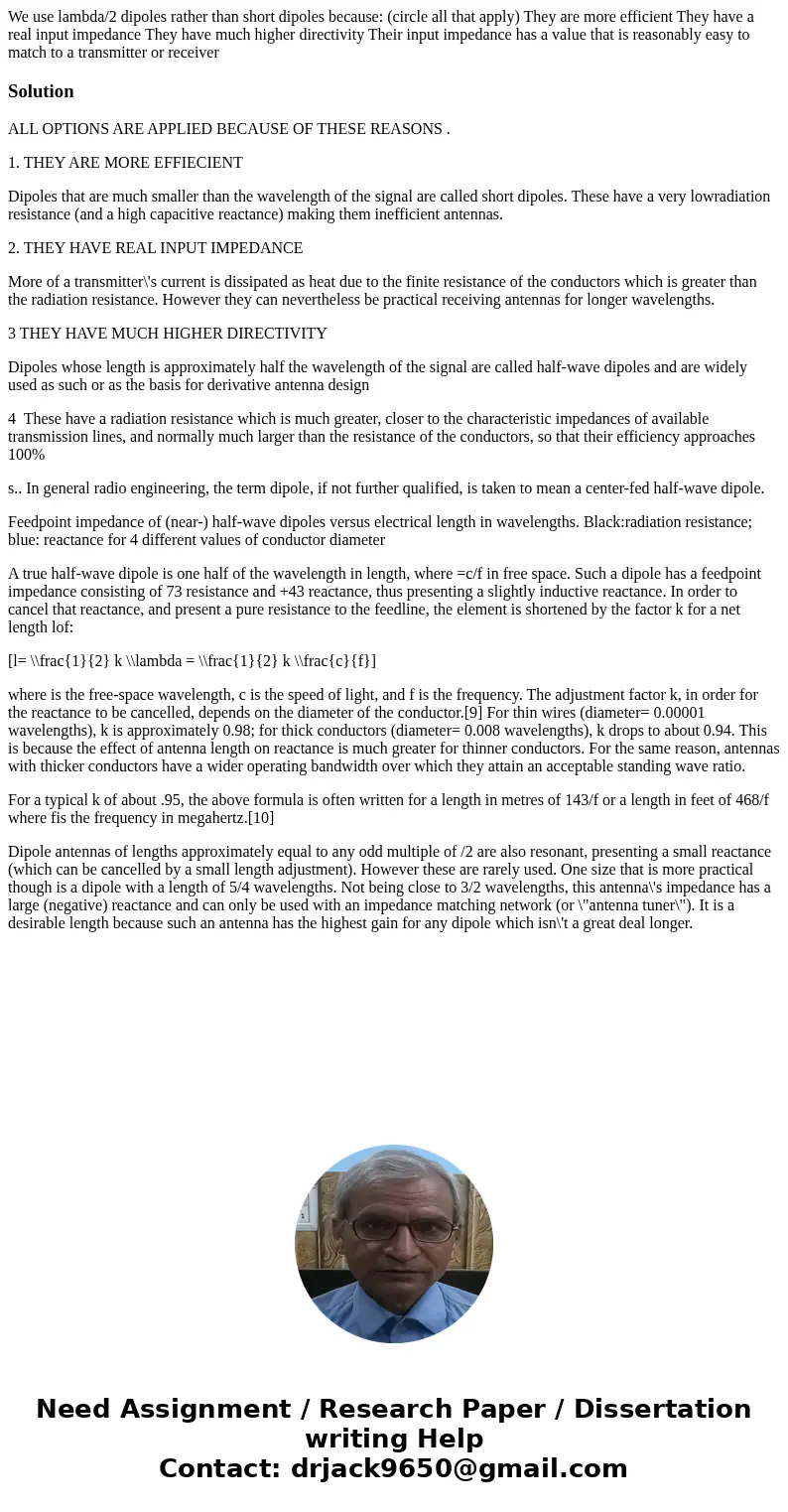We use lambda2 dipoles rather than short dipoles because cir
Solution
ALL OPTIONS ARE APPLIED BECAUSE OF THESE REASONS .
1. THEY ARE MORE EFFIECIENT
Dipoles that are much smaller than the wavelength of the signal are called short dipoles. These have a very lowradiation resistance (and a high capacitive reactance) making them inefficient antennas.
2. THEY HAVE REAL INPUT IMPEDANCE
More of a transmitter\'s current is dissipated as heat due to the finite resistance of the conductors which is greater than the radiation resistance. However they can nevertheless be practical receiving antennas for longer wavelengths.
3 THEY HAVE MUCH HIGHER DIRECTIVITY
Dipoles whose length is approximately half the wavelength of the signal are called half-wave dipoles and are widely used as such or as the basis for derivative antenna design
4 These have a radiation resistance which is much greater, closer to the characteristic impedances of available transmission lines, and normally much larger than the resistance of the conductors, so that their efficiency approaches 100%
s.. In general radio engineering, the term dipole, if not further qualified, is taken to mean a center-fed half-wave dipole.
Feedpoint impedance of (near-) half-wave dipoles versus electrical length in wavelengths. Black:radiation resistance; blue: reactance for 4 different values of conductor diameter
A true half-wave dipole is one half of the wavelength in length, where =c/f in free space. Such a dipole has a feedpoint impedance consisting of 73 resistance and +43 reactance, thus presenting a slightly inductive reactance. In order to cancel that reactance, and present a pure resistance to the feedline, the element is shortened by the factor k for a net length lof:
[l= \\frac{1}{2} k \\lambda = \\frac{1}{2} k \\frac{c}{f}]
where is the free-space wavelength, c is the speed of light, and f is the frequency. The adjustment factor k, in order for the reactance to be cancelled, depends on the diameter of the conductor.[9] For thin wires (diameter= 0.00001 wavelengths), k is approximately 0.98; for thick conductors (diameter= 0.008 wavelengths), k drops to about 0.94. This is because the effect of antenna length on reactance is much greater for thinner conductors. For the same reason, antennas with thicker conductors have a wider operating bandwidth over which they attain an acceptable standing wave ratio.
For a typical k of about .95, the above formula is often written for a length in metres of 143/f or a length in feet of 468/f where fis the frequency in megahertz.[10]
Dipole antennas of lengths approximately equal to any odd multiple of /2 are also resonant, presenting a small reactance (which can be cancelled by a small length adjustment). However these are rarely used. One size that is more practical though is a dipole with a length of 5/4 wavelengths. Not being close to 3/2 wavelengths, this antenna\'s impedance has a large (negative) reactance and can only be used with an impedance matching network (or \"antenna tuner\"). It is a desirable length because such an antenna has the highest gain for any dipole which isn\'t a great deal longer.

 Homework Sourse
Homework Sourse